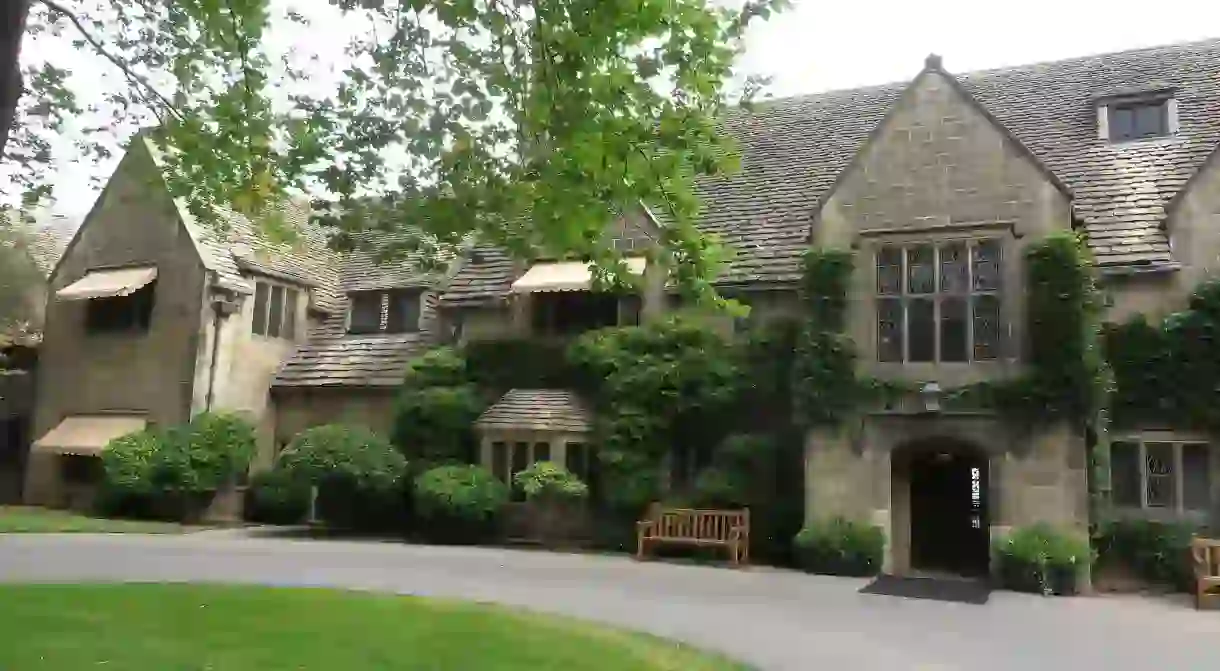How Albert Kahn Became the “Architect of Detroit”

In the early 20th century, as Detroit became one of the world’s foremost cities, one man distinguished himself as the greatest industrial architect of his age. Across a more than 50-year career, Albert Kahn revolutionized how manufacturing buildings were designed and constructed, and he produced a large number of Detroit’s most significant and beloved structures.
Kahn was born in Prussia (present-day Germany) in 1869 and immigrated to Detroit when he was 11 years old. At that time, the city was experiencing growth thanks to the shipping, shipbuilding and manufacturing industries, and a number of architectural firms were rapidly constructing housing and churches, as well as offices and commercial buildings.

After excelling in drawing lessons at a young age, Kahn joined the firm Mason & Rice in 1884 where he was taken under the wing of leading architect George D. Mason. In 1890, his burgeoning talent was rewarded with the American Architect and Building News Scholarship for foreign travel, and he spent a year touring Europe.
He was soon ready to strike out on his own, and he founded his own firm in 1895, taking several architects from Mason & Rice with him. Early projects for the firm included a hospital, library, and an apartment building, but the impending explosion of the auto industry provided the perfect opportunity for the firm to really establish itself. In 1901, the firm completed its first industrial building, and the following year, Kahn hired his younger brother Julius, a civil engineer who was developing a new style of construction using reinforced concrete, allowing for better safety and larger open spaces, ideal for large-scale manufacturing.

The Packard Automotive Plant, completed in 1903, was the first to utilize the new method and was widely regarded as the premier automobile manufacturing facility in the world, which caught the eye of Henry Ford. Kahn was subsequently appointed to design Ford’s Highland Park Plant, where the moving assembly line was pioneered, in 1910, and later the Ford River Rouge Complex, the largest integrated factory in the world at the time.
Though he spent years as the leading architect of the auto industry, working on thousands of other industrial buildings across the entire country and even the Soviet Union, including important contributions to the war effort in both WW1 and WW2, his skills and focus were not limited to functional factories and plants in his hometown. Among his many other notable projects in the city were the Belle Isle Aquarium and Conservatory (1904), Cranbrook House (1908), Detroit’s National Theatre (1911), The Detroit News Building (1917), the General Motors Building (1919), the Detroit Free Press Building (1925), the Edsel and Eleanor Ford House (1927), the Fisher Building (1927), and various buildings at the University of Michigan.

Albert Kahn Associates remains active in Detroit to this day, and though not all of his structures are still standing, at one time or another, approximately 60 Kahn buildings have been listed on the National Register of Historic Places. His impact on Motor City and industrial design have rightly earned him the nicknames the “architect of Detroit” and “father of modern factory design.”













